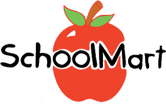Textbooks vs. Screens: What a New Study Reveals
In the push to digitalize classrooms, school districts across the country have been providing electronic versions of textbooks and other reading material to students. But, how does reading from a screen impact student’s comprehension and retention abilities? Here, the technology aficionados at SchoolMart summarize findings from a recent study on the subject, and how this should impact the way educators implement technology in the classroom.
Children born in the Digital Age—those who have had access to electronic devices almost since birth—believe themselves to be tech experts, and tend to show preference for technological devices over traditional mediums for obtaining information, such as textbooks or newspapers. However, their preference for electronic information may not reflect an actual improvement in comprehension or retention—a new study shows that regardless of how students perceive their ability to glean information from a device’s screen, their actual ability suffers when compared to reading information from a traditional paper page.
A new study, as well as a review of older studies—performed by educational researchers Lauren Singer and Patricia Alexander—has shown that students are better able to comprehend information on a printed page, rather than a screen, when the information is longer than a page in length. Changes to student’s ability to comprehend were not seen when information was under a page long—the reason? The researchers believe that this is related to the disruptive effect that scrolling through an article has on student’s ability to retain information. When the researchers realized that past studies focused very little on different levels of comprehension or documented reading time in their studies of printed and digital texts, Singer and Alexander created a new study to test just these facets of the issue.
First asking students to choose their favorite medium, the students were then instructed to read two passages: one on an electronic device, the other in print. Questions were then asked about the main idea of each piece of text, key points covered in the reading and any other relevant information they could recall. Students were also asked to judge their comprehension abilities when using both mediums. Texts differed in length, and reading times were also recorded by the researchers.
After compiling the data, some key patterns emerged: Students overwhelmingly preferred electronic to printed material, and students perceived their comprehension ability as better when using electronic devices. Reading speeds were also much faster when reading from an electronic screen. However, overall comprehension suffered when students used electronic devices compared to printed material: while general question comprehension was not harmed by use of a device, student’s ability to answer specific and more detailed questions was substantially poorer.
What does this mean for educators? The researchers warn that there is no “one medium fits all” approach, and that it is important for teachers to provide a variety of mediums for various types of lessons and readings. While electronic devices can be valuable for shorter passages and general knowledge questions, it is critical that printed material still be available for longer readings and more detail-oriented discussions. Singer and Alexander also recommend that teachers allow students to make informed decisions about how they consume material by relating the facts of these studies, and others, to them before they are assigned a reading and comprehension task. While technology has radically changed the way we interact with the world—often for the better—it is still important to see the value of traditional methods of knowledge-obtainment, and use them where appropriate.
Read more about technological trends in classrooms on our SchoolMart blog!

